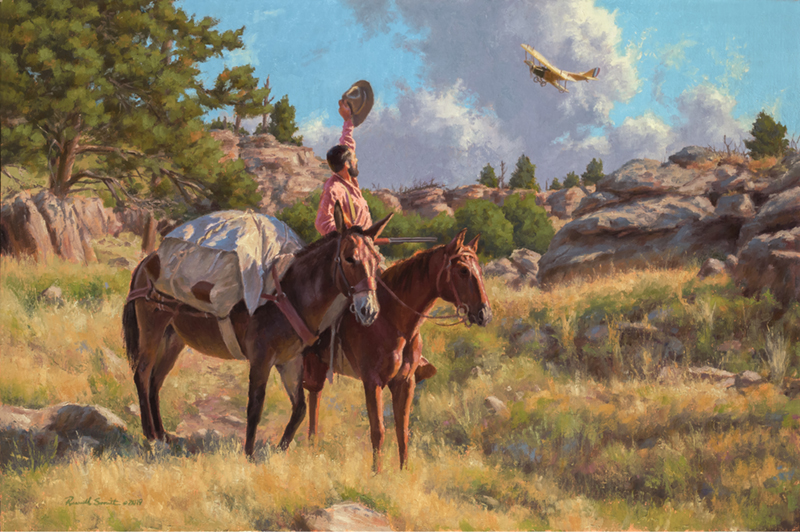Russell Smith’s original career plan was to become an aeronautical engineer so he could design airplanes. That changed after he took a few art classes during his first year of college. “I realized I didn’t want to design them, I wanted to paint them,” he says.
And that’s just what he’s been doing for more than 20 years. His depictions of early aircraft—combined with the people and land of the West—are wonderfully crafted and carry with them a captivating energy, excitement, and perspective. His paintings, fueled by an early love of aviation, have earned him several awards but the real reward is painting what he loves: aviation and the West.
Aviation was first in Smith’s book for several years. He got his first model airplane when he was 7, but didn’t do well putting it together. It broke, he recalls, so he made up stories in his head about how, if it had been a real plane, it would have been damaged. His father had a pilot’s license and took his young son up into the clouds, where Smith saw everything from a new perspective.
Read the full article in the July/August 2023 issue.

A Pair of Jennies
Oil
20” by 30”
“Wyoming, 1922: A lone hunter is on a pack trip in the mountains. As he leads his small team through the hills, he hears an unexpected sound. He looks up to see a Curtiss JN4 Jenny flying low overhead, a sign of new technology and the coming age of air travel. He waves to the aircraft but his jenny mule is uninterested in such things.”

Black Jack’s Desert Air Force
Oil
18” by 36”
“After Pancho Villa’s attack on Columbus, New Mexico, the U.S. Government launched a full-scale invasion of Mexico led by General John J. Black Jack’ Pershing. Accompanying Pershing’s forces into Mexico was the 1st Aero Squadron led by Capt. B.D. Foulois. Equipped with Curtiss JN-3 Jennys the squadron’s deployment was the first use of a U.S. aviation unit in military action, and the squadron’s simple marking—a red star painted on the airplanes’ rudder—was the first use of a national insignia on a U.S. aircraft.”








